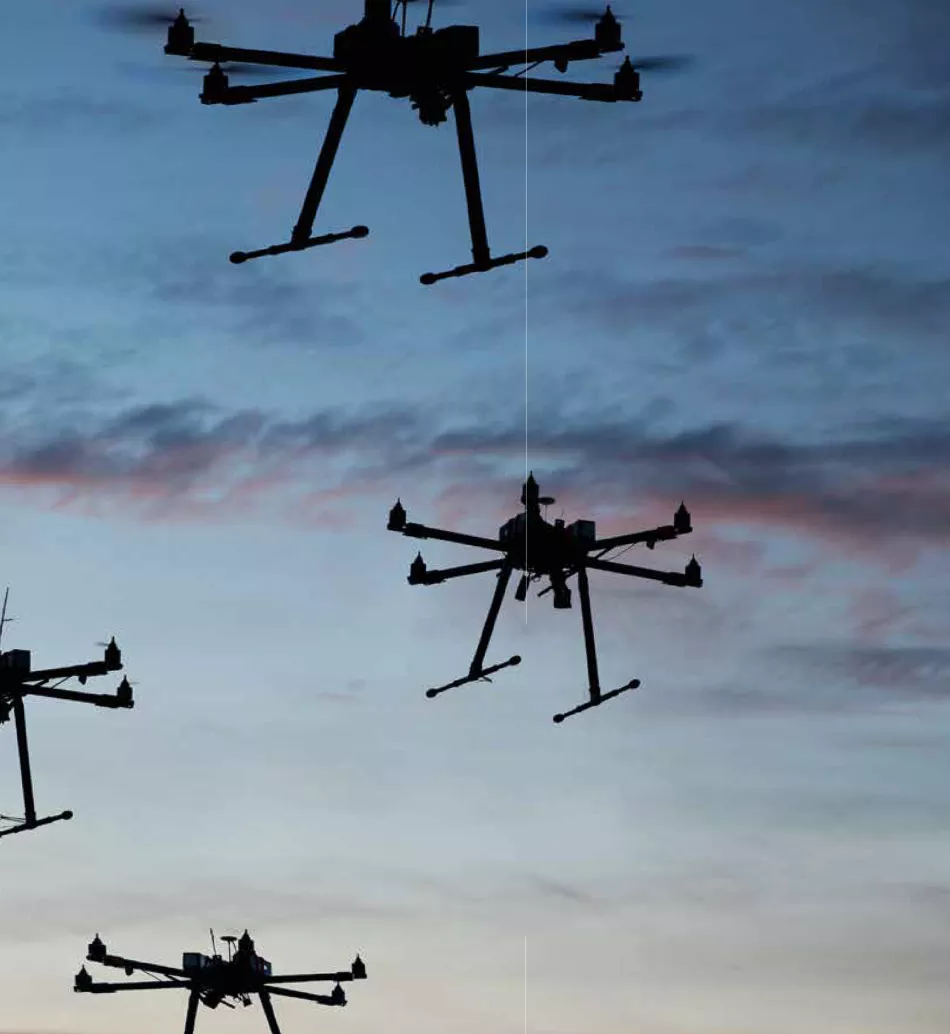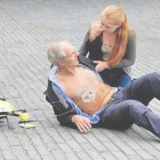The rise of drones, the market takes off

From military-only to geek’s gadget, UAVs have become ubiquitous. Last year saw a significant take-off of consumer drones. This year they will fly everywhere – despite privacy and security issues.
Get ready for this technological and social revolution. Remember the 1989 movie “Back to the future Part II”? Hero Marty McFly (Michael J. Fox) travels forward in time and lands in 2015. His first glimpse of the future: a drone walking a dog. Well, it seems that we may very well see this actually happen in our 2015.
Until recently, drones or UAVs (unmanned aerial vehicles), RPAS (re- motely piloted aircraft systems) or UAS (unmanned aerial systems) were restricted to the military vocabulary. Valuable allies in reconnais- sance missions, they have also made it possible to hit the enemy with- out risking the soldiers’ lives. The Obama administration have turned them into major tools in its asymmetrical warfare against terrorism.
Recreational drones have arrived more recently, thanks to model aircraft fans. Lightweight and affordable, they benefit from ever im- proving technology. The boom in the smartphone market, using similar miniature technologies – optical elements, batteries, gyroscopes, com- passes, pressure sensors and accelerometers – as well as more and more powerful processors have also accelerated their uptake.
Recreational drones have rapidly appealed to professionals – first of all to image and surveillance professionals. However, these users require higher specifications, in terms of weight load, reliability and security. The commercial drone market was born to meet these requirements (interview on page 15). According to specialists, this market may very well exceed the military or recreational markets. In any case, as far as legally permitted.
In fact, in many countries, commercial drones are forbidden, with a few exceptions. This is the case in the US, where regulation should have come into force this year, but was postponed until 2017. In other coun- tries, like in France, these commercial flights are authorized to a much greater extent, but law enforcement and legal training are still rather unclear. The international trend is to integrate drones into civil aviation law, which promises to be a lengthy and complex process.
These restrictions have not prevented an explosion of commercial and recreational projects (see page 20). The drones that Amazon is hoping to use for parcel delivery are the most publicized examples.
The will of authorities to keep control is legitimate. It also brings up the issue of privacy, in case they are equipped with cameras: “Are UAVs nothing more than flying Google Glasses?” some ask. Drones also represent a risk to physical safety: this is recent technology, operat- ed by people without extensive training. Crashes are quite common, even in the streets of New York. The question is not whether, but when a serious accident will happen.
The FAA (Federal Aviation Administration) has recorded hundreds of incidents involving drones and commercial airplanes. Even some close calls have been recorded at La Guardia Airport, New York. In
England, last summer, a drone passed just 7m from the wing of an Air- bus during the landing approach at London Heathrow Airport.
Other extremely sensitive areas have also been visited by drones. French nuclear power stations have been flown over, without any pilots being identified. Also in France, the operators of a drone have been given a four-month suspended prison sentence for causing dan- ger to life, impeding air transport, operating an aircraft not conforming to safety rules and violation of air navigation rules: they flew their drone above a sinking boat, delaying helicopter rescue operations.
At the end of January, a new incident became the most emblematic case of potential threat: a quadcopter crashed on the lawn of the White House. It could have carried explosives.
The risk of accidents, indiscretion and even attacks have induced public skepticism. According to a recent Associated Press survey, only 21% of Americans support the use of commercial drones.
Obviously, all new technologies generate such queries, which rarely prevent them from becoming accepted. Commercial drones provide useful services, cost savings and open highly lucrative business oppor- tunities. There is little doubt that regulations will be implemented and the market will take off – 2015 is just the beginning.
Soon these drones will benefit from “detect and avoid” systems that will secure flights. They will be equipped with better batteries and become more intelligent. In short, more reliable.
Tomorrow drones will be assembled to transfer digital data before dis- persing. “Paparazzi” drones will stalk everything that television chan- nels want to film. Tomorrow your drone will accompany your children to school. A drone ambulance may even save your life (see page 19).
In the meantime, if you want to use a UAV to walk your dog, finding a model shouldn’t be a problem. But it may work better if your dog is a Chihuahua.


